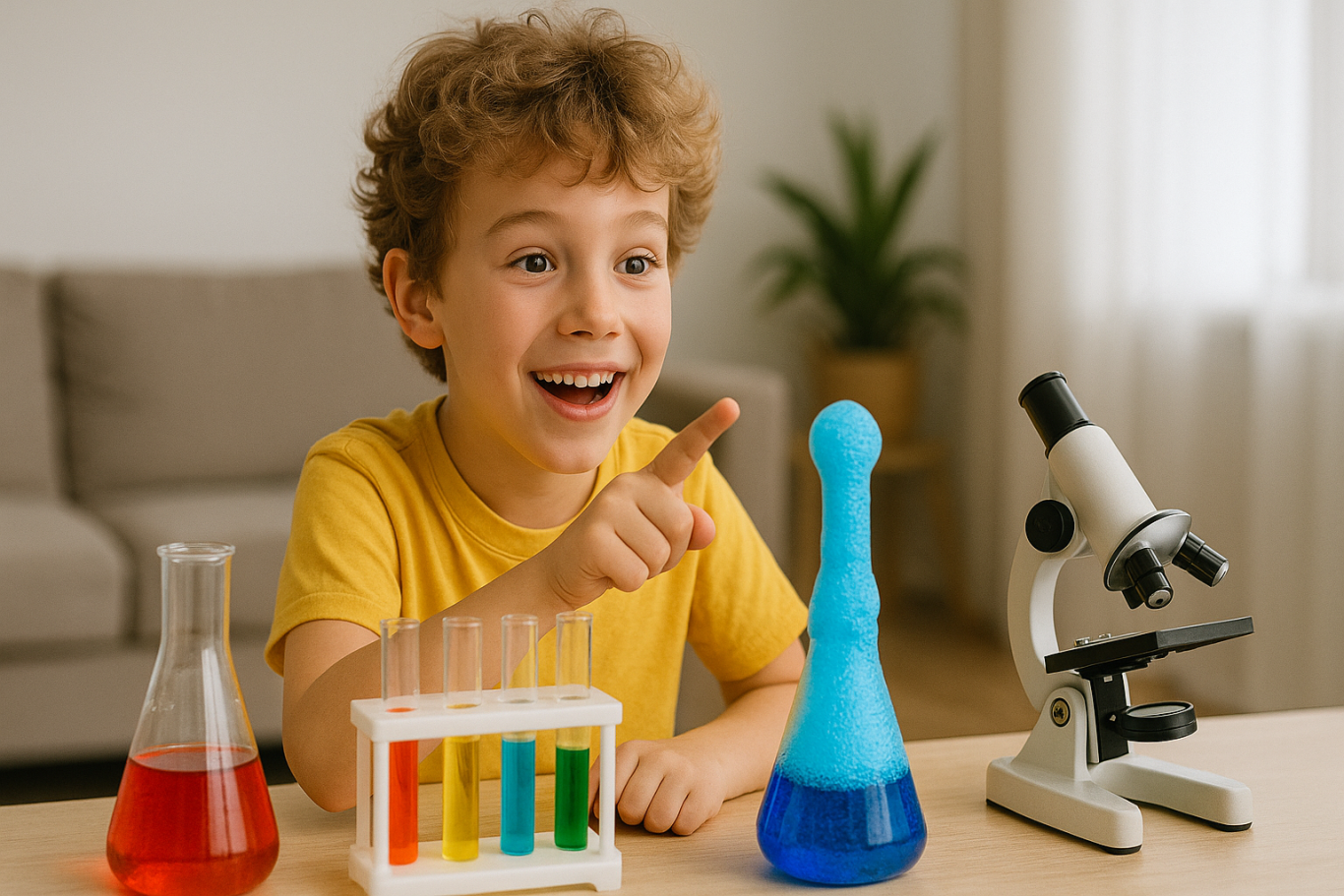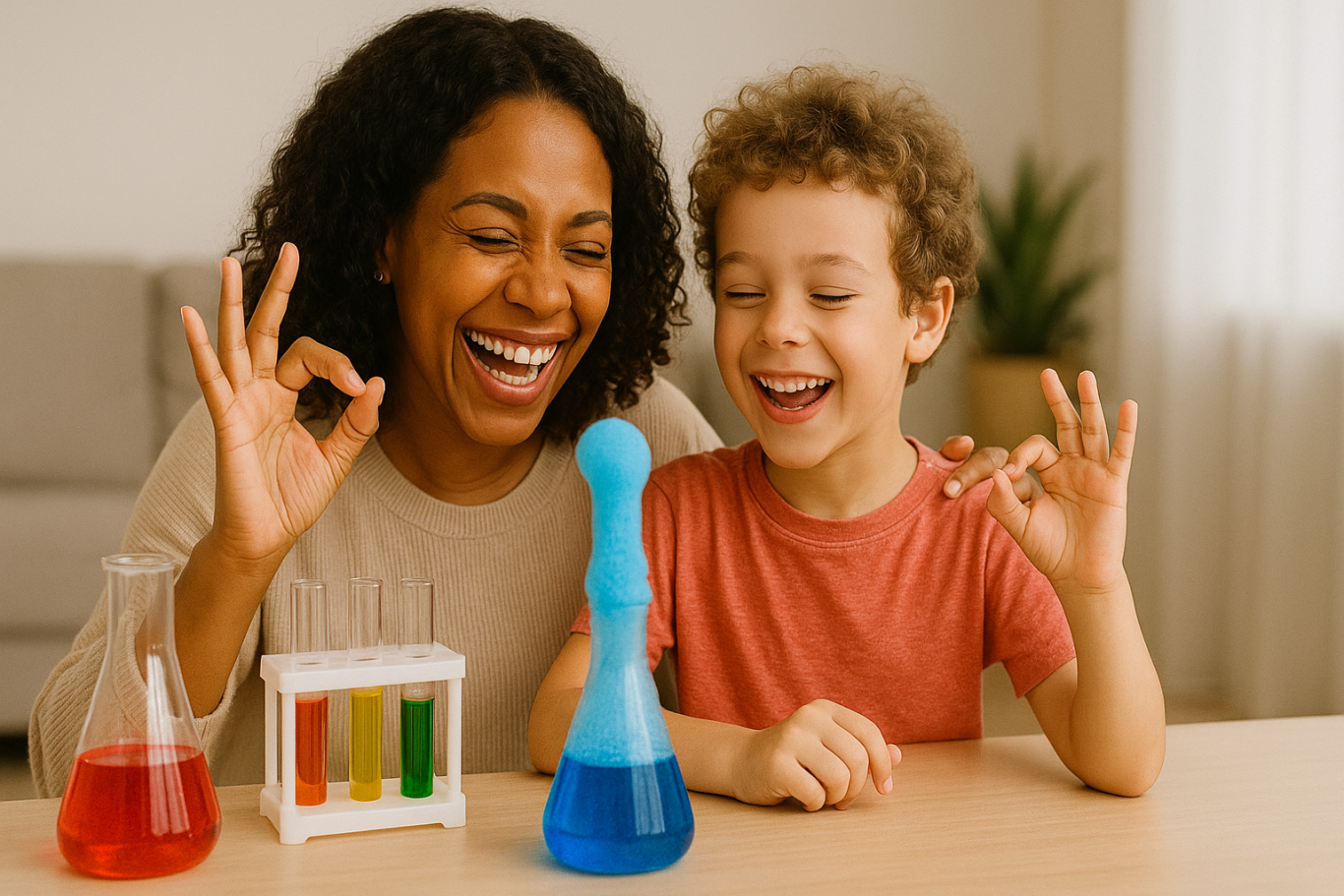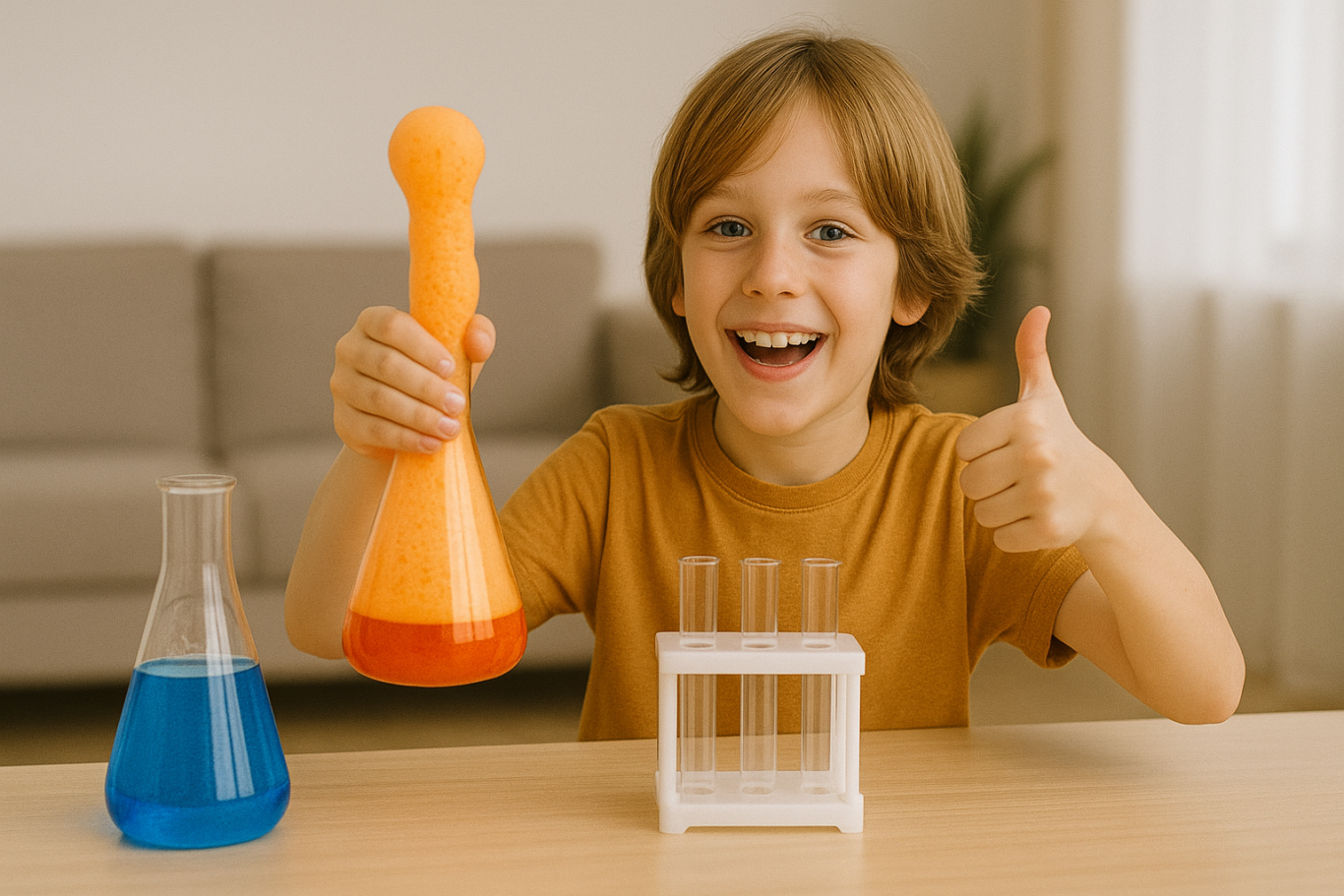Fun Science Experiments For Kids You Can Try at Home in 2025
Children are naturally curious. Unfortunately, that curiosity can fade when learning feels limited to books or school assignments. In reality, learning can be a fun activity you enjoy together at home. One of the best ways to keep your child engaged is through fun science experiments for kids.
These experiments are not just for fun. They are also a simple and effective way to introduce basic concepts of logic, cause and effect, and help children develop structured thinking. Plus, they offer valuable quality time for parents and children to bond.
Why Should You Try Science Experiments at Home?

Before we dive into the examples, it is worth understanding why fun science experiments for kids are so beneficial.
First, kids learn better when they can see and experience things directly, rather than just reading about them. Second, it shows children that learning is not always about sitting still at a desk. Third, it creates opportunities for meaningful parent-child interaction through shared learning moments.
Simple and Fun Science Experiments For Kids

No need for complicated tools. Most of these activities use everyday items you probably already have at home.
1. Baking Soda and Vinegar Volcano
A timeless experiment that never fails to impress. Build a small “volcano” from clay or playdough around a container, add baking soda, then pour vinegar mixed with food coloring. The result is a small lava-like eruption that kids will love.
2. Walking Water Rainbow
Line up cups filled with colored water, placing empty cups in between. Connect them with folded paper towels. Over time, the water will “walk” through the towels and mix colors, creating a rainbow effect. This is a fantastic visual example of capillary action and a perfect fun science experiment for kids.
3. DIY Lava Lamp
Using a plastic bottle, add vegetable oil, water, food coloring, and an effervescent tablet. Watch as colorful bubbles rise and fall, mimicking a lava lamp. This teaches kids about density and simple chemical reactions.
4. Magic Milk
Pour milk into a shallow dish, add drops of food coloring, then touch the surface with a cotton swab dipped in dish soap. The colors will swirl and move due to changes in surface tension. This fun experiment also sparks curiosity about how molecules interact.
5. Static Electricity Butterfly
Cut a butterfly shape from tissue paper, rub a balloon on your hair, then bring it close to the paper. The butterfly wings will “lift” due to static electricity. This simple and entertaining activity helps children understand basic physics concepts.
From Science to Coding: Training a Child’s Logical Thinking

At first glance, these fun science experiments for kids might seem simple. However, they actually help develop logical thinking, patience, and step-by-step problem-solving. These are the same foundational skills used in coding.
Coding teaches children to break down complex problems into smaller tasks, much like the scientific process in experiments. Both require focus, precision, and persistence.
If children become familiar with structured thinking through simple science activities, transitioning to coding will feel like a natural and enjoyable next step.
Tips to Keep Home Experiments Fun and Stress-Free

To make sure your experiments go smoothly and your child stays excited, keep these tips in mind:
- Safety first. Always supervise, even when using everyday materials.
- Get your child involved from the start. Let them help prepare and take ownership.
- Do not fear failure. Mistakes are valuable learning opportunities.
- Relate experiments to everyday life. Show how science is all around them.
Learning Can Be Fun and Practical

By doing fun science experiments for kids, parents can make learning more enjoyable and hands-on. It allows children to experience cause and effect directly, beyond memorizing facts from a textbook.
If you want to take it a step further, introducing your child to coding is another great way to develop structured thinking. Coding helps children stay focused, think logically, and persevere through challenges.
Try a Free Coding Class with Timedoor Academy
If you are looking for a way to combine fun and learning, Timedoor Academy offers free coding classes for kids. The lessons are interactive, engaging, and designed to match your child’s age and learning pace.

Ingin tahu detail program?
Sign up today and help your child sharpen their logical thinking skills from an early age:
Join Timedoor Academy’s Free Coding Trial Class